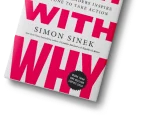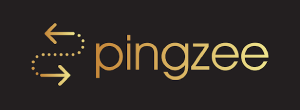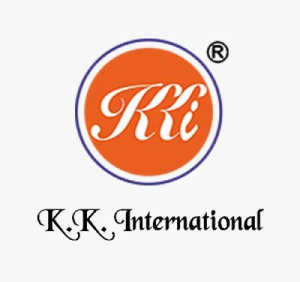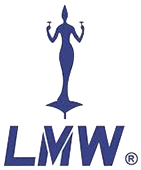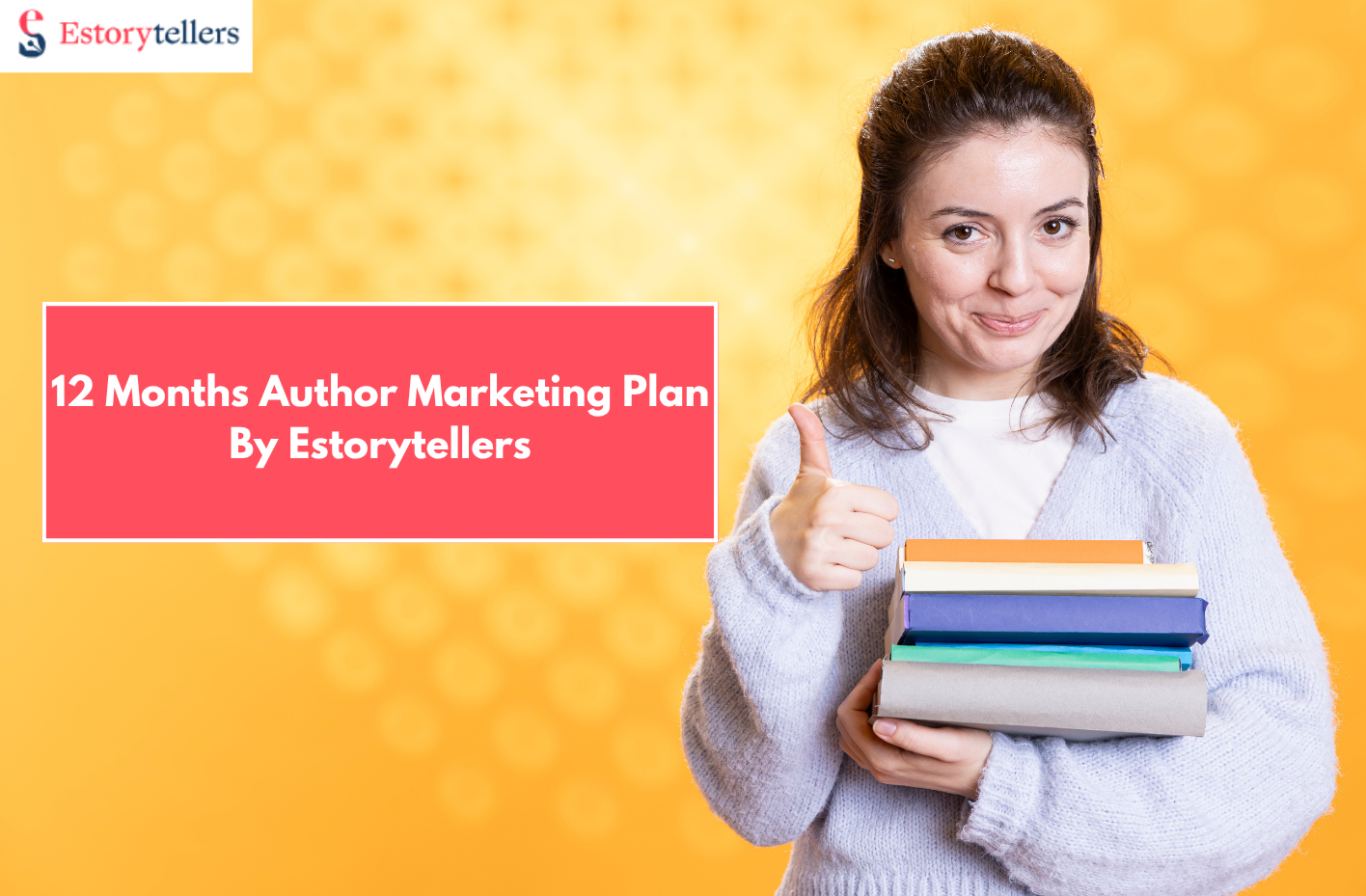
Marketing your book doesn’t start after you publish—it starts the moment you decide to become an author.
At Estorytellers, we’ve worked with hundreds of writers who discovered that writing a book is only half the journey. The other half is getting that book into the hands of the right readers, at the right time, using the right message. That’s where a strategic author marketing plan makes all the difference.
Whether you’re launching your debut novel, growing your nonfiction platform, or relaunching a backlist title, a solid marketing plan can build your audience, boost book sales, and strengthen your long-term brand as a writer. In the sections ahead, we’ll walk you through everything from foundational branding to budget-conscious ad campaigns, all tailored to meet you where you are.
Let’s begin with why a marketing plan isn’t optional anymore.
Why Every Author Needs a Marketing Plan in 2025
The idea that a great book will “sell itself” is one of the most persistent myths in publishing. While quality writing is non-negotiable, it’s not enough to stand out in an industry where thousands of books are released every single day. Even traditionally published authors are now expected to take an active role in their own marketing—and for self-published writers, the responsibility is entirely yours.
Without a structured marketing plan, most authors end up reacting instead of leading. They try random social media posts, run sporadic promotions, or only focus on marketing during a book launch. The result? Missed opportunities, low visibility, and inconsistent sales. More importantly, they lose valuable time that could have been spent building long-term relationships with readers.
A marketing plan provides clarity, consistency, and control. It turns scattered effort into a purposeful strategy that aligns with your goals—whether that’s landing on a bestseller list, growing your mailing list, or building a sustainable author business over time. With the right plan, you’re not just marketing a book. You’re building a brand.
Now let’s walk through the first step: defining your author brand and goals.
Your Personalized Author Marketing Plan
From manuscript to market—we craft a tailored plan covering publishing, editing, email marketing, and ISBN setup for maximum visibility.
Build Your Marketing PlanSet Your Author Brand and Goals First
Before you post on social media or run your first ad, you need to know who you are as an author and what you’re trying to achieve. Your brand is more than just a logo or tagline—it’s the emotional and creative experience readers associate with your name. It’s how you build trust, recognition, and loyalty over time.
Start by clarifying your niche. Are you writing psychological thrillers or cozy mysteries? Business books or inspirational memoirs? Knowing your genre is step one, but knowing your ideal reader is just as important. Think about the age, interests, and reading habits of your target audience. Where do they spend time online? What kind of content resonates with them?
With a clear audience in mind, you can shape your author brand—your tone, style, messaging, and visuals. From your bio to your Instagram feed, everything should feel consistent and authentic. Once your brand is clear, define your goals. Do you want to sell 5,000 copies in your first year? Land speaking gigs? Grow a 10,000-person mailing list? Use the SMART goal framework—specific, measurable, achievable, relevant, and time-bound—to turn your aspirations into action.
Build Your Author Platform: The Foundations
Your author platform is your personal media ecosystem—it’s how readers find you, follow you, and stay connected to your work. Every strong platform has three pillars: your website, your email list, and your social media presence.
First, your website is your home base. It should include a professional author bio, book pages with purchase links, a blog (optional but helpful for SEO), and a contact form. Make sure it’s mobile-friendly, easy to navigate, and branded consistently with your other channels.
Second, your email list is your most valuable marketing asset. Unlike social media, you own this list. Use it to share updates, offer exclusive content, and build real relationships with readers. Start by offering a lead magnet—a free short story, sample chapters, or a printable resource—in exchange for email signups. Services like MailerLite or ConvertKit make this easy and affordable.
Third, social media is where discovery often happens. Focus on the platforms where your ideal readers are most active—TikTok for YA and romance, Instagram for visual storytelling, or LinkedIn for nonfiction professionals. You don’t need to be everywhere; consistency and quality matter more than reach.
Content and Outreach Strategy
Once your platform is in place, your next move is to create and share content that builds trust, sparks interest, and expands your reach. This includes original content on your own channels as well as outreach that places you in front of new audiences.
Start with content marketing—blog posts, short videos, newsletters, or podcast episodes that reflect your brand and offer value. For fiction authors, this might include behind-the-scenes peeks at your writing process, character inspiration, or bonus chapters. For nonfiction authors, focus on insights, advice, or commentary tied to your book’s theme.
Outreach is equally important. Look for opportunities to appear on podcasts, contribute guest articles, or partner with other authors in your genre. A joint giveaway, a shared live stream, or a newsletter swap can quickly introduce you to hundreds or even thousands of new readers. You’re not just promoting a product—you’re creating visibility and authority in your space.
Finally, short-form content—like reels, TikToks, or quote graphics—can dramatically boost discoverability. Don’t aim for virality; aim for consistency. Every piece of content is a small signal to the algorithm—and your audience—that you’re here to stay.
Strategize. Promote. Sell.
We help you sell more books through a strategic marketing plan that blends social media, emails, ISBN registration, and publishing support.
Get Your StrategyBook Launch vs. Evergreen Marketing
A successful book launch can create momentum, but it’s not the end of your marketing—it’s just the beginning. Authors who treat marketing like a one-time push often see their sales peak and then flatline. That’s why it’s critical to have both a launch strategy and an evergreen strategy working together.
Your launch strategy should begin at least three months before publication. Start building buzz through cover reveals, teaser excerpts, early reviews, and preorders. Coordinate outreach with book bloggers, influencers, or podcast hosts in advance. Make a checklist of launch week activities—email blasts, live events, paid promos, and social posts—to maximize visibility. If you’re self-publishing, be sure to optimize your Amazon listing and consider scheduling price promotions to encourage downloads.
But don’t stop there. An evergreen marketing plan keeps your book visible long after launch. This could mean repurposing old content, setting up automated email sequences, or scheduling seasonal promotions throughout the year. Older titles still have value, especially when marketed as part of a series or tied to current trends.
Think long-term. Every new follower, blog post, or podcast appearance can continue generating sales long after your launch week ends. The goal isn’t just to sell books today—it’s to build a sustainable author career.
Paid Advertising and Budgeting
While organic marketing builds trust over time, paid advertising can help you scale faster—especially when launching a new book or reviving backlist titles. The key is knowing where to spend your money, how to test your campaigns, and what results to expect at different budget levels.
Start with Amazon Ads if you’re selling on Kindle or through Amazon’s print-on-demand platform. These ads target readers directly on the world’s biggest bookstore, and even small budgets can generate consistent impressions. Use keyword targeting that aligns with your book’s genre and competitors, and monitor your campaigns weekly to adjust bids and creative.
Meta Ads (Facebook and Instagram) are ideal for reaching cold audiences, building your email list, or retargeting engaged readers. Visual assets like video teasers, carousel ads, or quote graphics tend to perform well. These platforms offer powerful audience targeting based on interests, demographics, and behaviors.
BookBub Ads, though more niche, are extremely effective for reaching voracious readers. They work best with discounted books or for promoting boxed sets and series. Because BookBub’s audience is already used to receiving book deals, your conversion rate is likely to be higher—if your ad copy and targeting are spot-on.
When it comes to budget, here’s a rough guide:
- $100–$300: Test one or two platforms, build awareness, and gather data.
- $500–$1,000: Run multi-platform campaigns with retargeting and stronger optimization.
- $1,000+: Scale successful campaigns and invest in list-building, lead gen, or wide distribution.
Always start small, track your ROI (return on investment), and treat every campaign as a learning opportunity. Ads won’t replace a strong platform, but they can absolutely amplify it.
One Plan, Endless Possibilities
Estorytellers’ Author Marketing Plan covers everything—ghostwriting, editing, email marketing, publishing, and even your book’s ISBN.
Explore the Full PlanA 12-Month Author Marketing Plan Template
A successful marketing plan isn’t something you create once and forget—it’s a living, breathing strategy that adapts as your author career grows. Whether you’re launching a debut novel or maintaining momentum on a backlist, mapping out your next 12 months gives you structure, focus, and peace of mind.
Here’s a sample 12-month plan that can be adjusted based on your publishing schedule:
Months 1–3: Foundation & Pre-Launch Prep
- Finalize your branding, author website, and lead magnet
- Begin growing your email list with weekly or biweekly content
- Schedule guest posts, podcast interviews, and early ARC outreach
- Build anticipation with behind-the-scenes content and cover reveals
Months 4–6: Book Launch Phase
- Announce your launch date and open preorders
- Launch your paid ad campaigns (Amazon, Meta, or BookBub)
- Go live regularly on social media to answer reader questions
- Host an online or in-person launch event
- Email your list frequently (1–2x/week) leading up to and just after launch
Months 7–9: Visibility & Audience Growth
- Repurpose launch content into evergreen blog posts or short videos
- Run a limited-time discount or free promo to boost downloads
- Collaborate with other authors for list-building or cross-promotion
- Monitor your ad performance and adjust targeting based on data
- Consider applying for awards or editorial reviews
Months 10–12: Engagement & Long-Term Positioning
- Share reader reviews and testimonials on all platforms
- Begin teasing your next book or project
- Run a reader survey to learn more about your audience
- Refresh your website and bio based on feedback
- Evaluate the year’s performance and revise your goals
Use tools like Trello, Notion, or Google Calendar to map out each milestone and keep track of tasks. Automation tools (like MailerLite workflows or social schedulers) can help you maintain consistency without burning out.
Remember, the goal isn’t perfection—it’s momentum. Even a basic 12-month plan will put you ahead of most authors who are flying blind.
Launch Your Book with a 360° Author Plan
From ghostwriting and editing to publishing, ISBN setup, and email marketing—we build a custom strategy that drives sales and builds your author brand.
Start My Author JourneyConclusion
Marketing your book isn’t a one-time campaign—it’s a continuous relationship with your readers. By building a strong foundation, defining your brand, and choosing the right tools for outreach, you can create a marketing plan that not only sells books but also builds a lasting author career. Whether you’re focused on your next launch or building long-term visibility, a clear, consistent strategy will keep your momentum strong and your message focused.
At Estorytellers, we believe every author deserves a marketing plan tailored to their voice, goals, and audience. If you’re ready to take the next step, your focus should shift toward building an engaged email list—one of the most powerful tools in any author’s toolkit. Knowing how to grow and nurture your list can multiply the impact of everything you’ve just built.
More Blogs:
The Complete Guide On How To Get an ISBN for Authors Around the World
15 Book Promotion Ideas to Boost Sales and Visibility In 2025
Email Marketing For Authors: How to Build an Author Email List from Scratch







